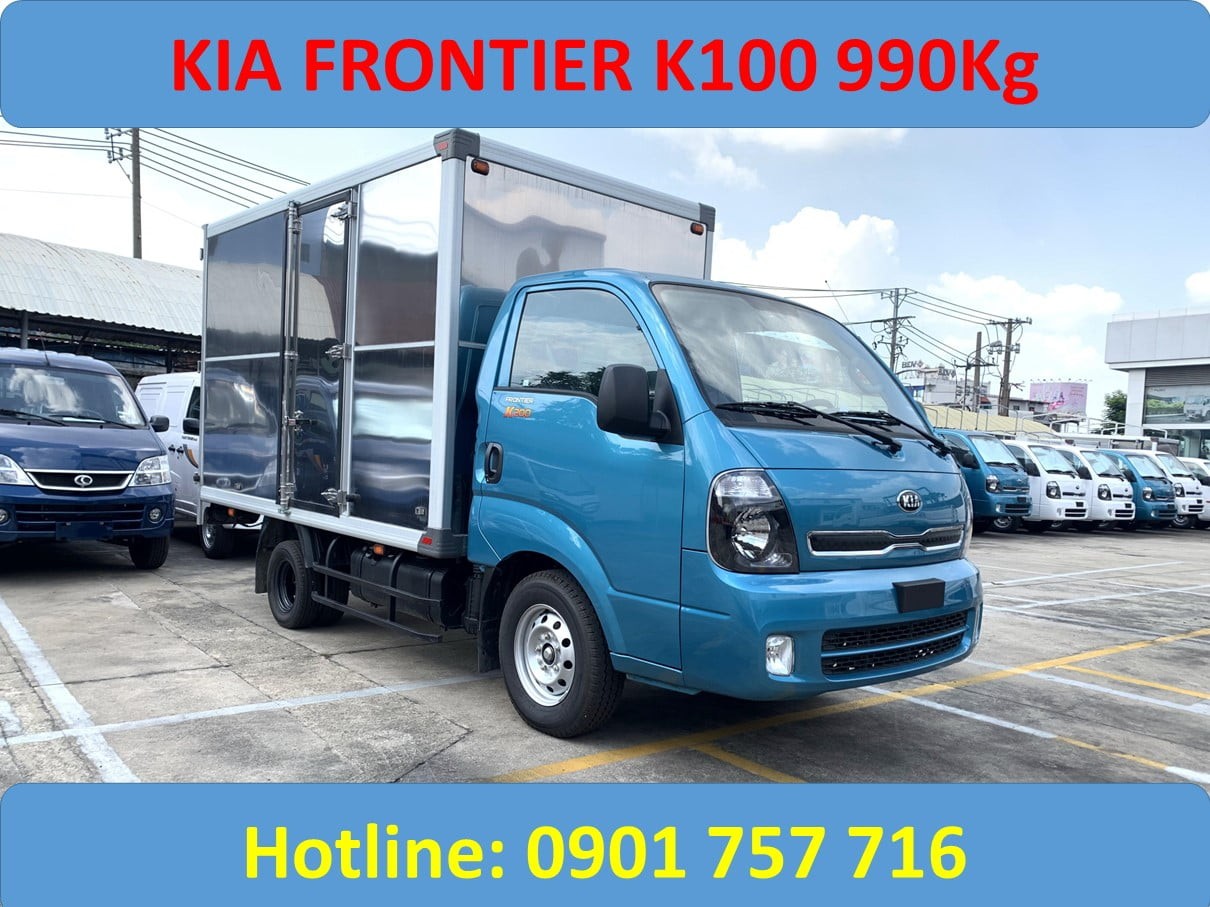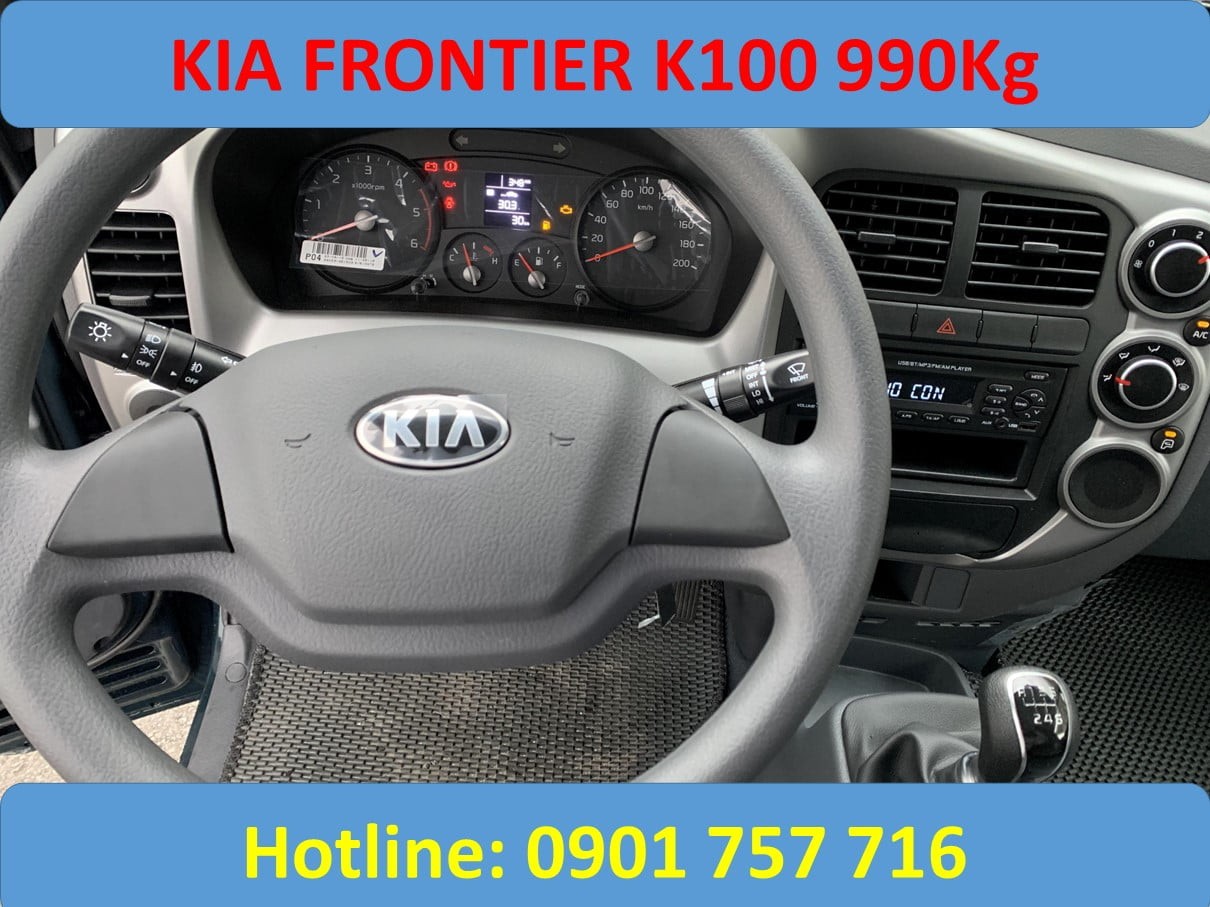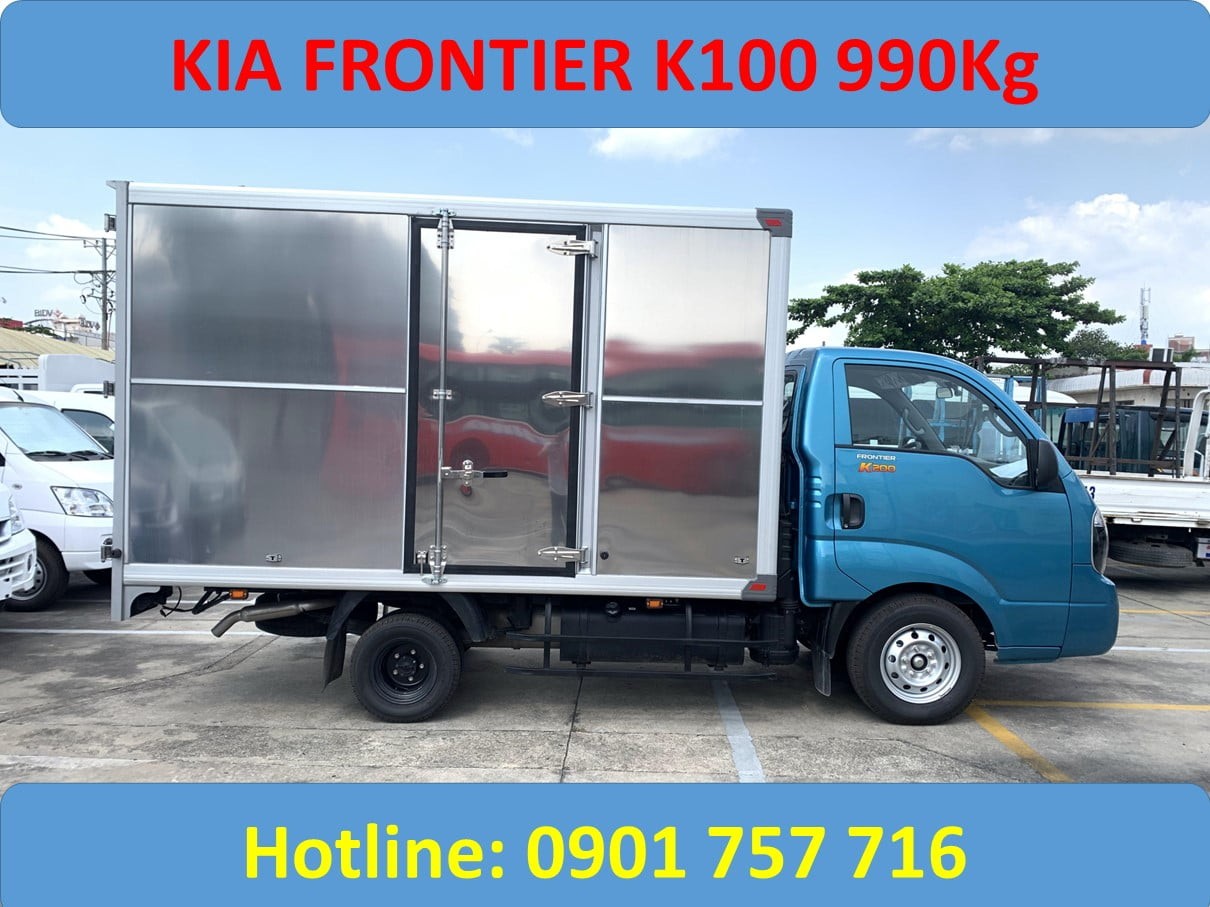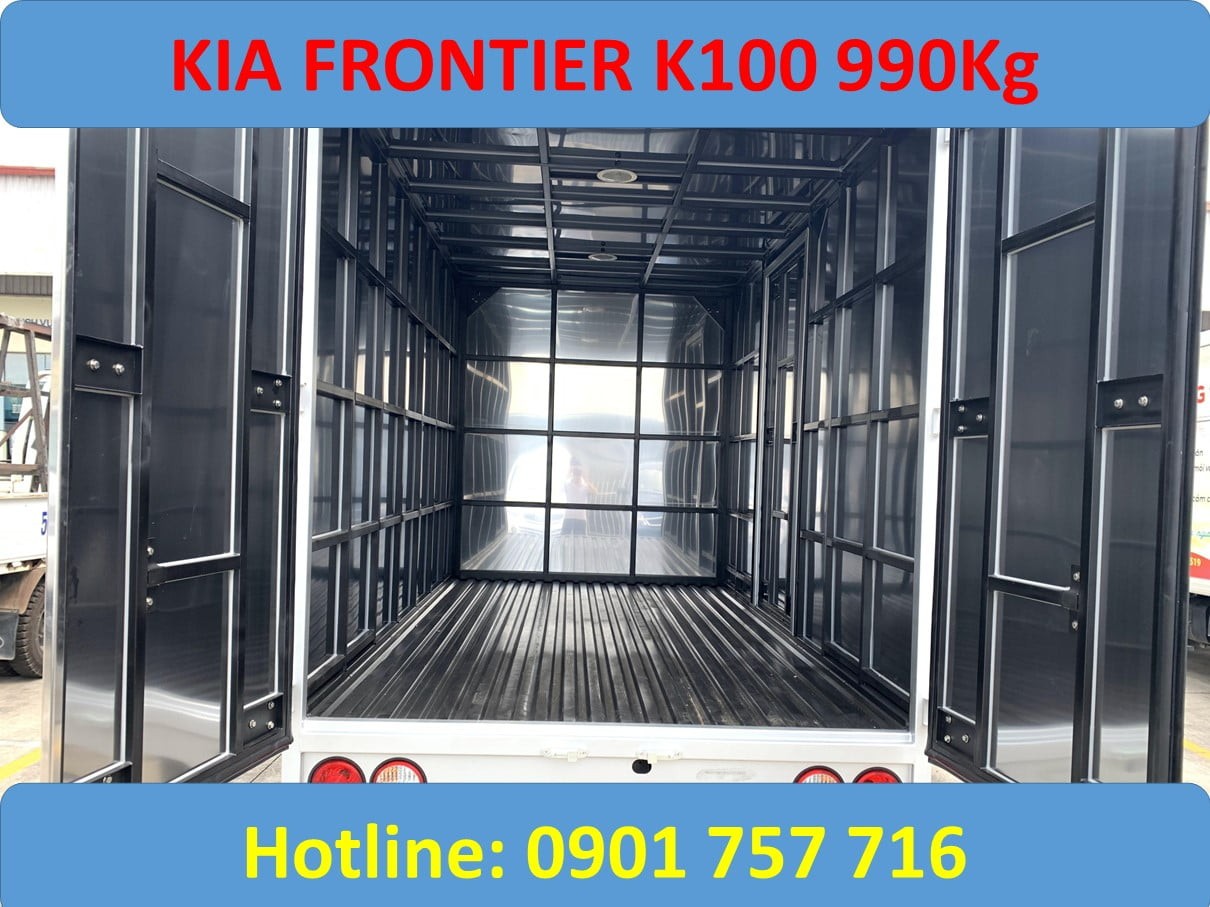The new Kia K100 1-ton truck, weighing 990kg, is the perfect replacement for the discontinued Kia K165 model. Equipped with a powerful Hyundai D4CB engine meeting Euro 4 emission standards, the Kia K100 promises high economic efficiency for users. This article will provide a detailed review of this new 1-ton Kia truck.
 Front view of the Kia K100 1-ton truck
Front view of the Kia K100 1-ton truck
Thaco Kia K100: The Perfect Replacement for Kia K165
According to Decision No. 49/2011 of the Government, from January 1, 2018, all imported and domestically assembled new automobiles must meet Euro 4 emission standards. Due to using the KIA JT engine with Euro 2 standards, the Kia K165 series no longer meets this requirement. Thaco has researched and developed the new Kia K100 product line, using the Hyundai D4CB engine, meeting Euro 4 standards, as a replacement for the Kia K165.
Powerful and Fuel-Efficient Engine
The new Kia 1-ton truck is equipped with a Hyundai D4CB engine, producing 130 horsepower, with electronically controlled fuel injection (common rail electronic fuel injection). This helps the engine optimize fuel combustion, be environmentally friendly, produce high power, and save fuel.
 Side profile of the Kia K100 truck showcasing its design
Side profile of the Kia K100 truck showcasing its design
Modern and Agile Exterior
The cabin of the new Kia 1-ton truck is imported from Hyundai Korea, spacious and with high noise insulation. Aerodynamic design minimizes wind resistance, helping the vehicle move flexibly in the city, avoid traffic jams, and easily maneuver on small roads. Large rearview mirrors increase visibility, ensuring absolute safety when traveling. Multi-point reflective Halogen headlights expand visibility in the dark or in bad weather conditions.
Spacious and Comfortable Interior
The Kia K100 cabin is scientifically designed and spacious. The driver’s seat can be adjusted for backrest angle and is covered with soft, high-quality simili. 3-point seat belts provide absolute safety for occupants. Power steering, adjustable up and down and tilt. Multi-information display cluster: vehicle speed, engine RPM, and fuel level.
 Kia K100 truck with a closed cargo box
Kia K100 truck with a closed cargo box
Comprehensive Safety System
The new Kia 1-ton truck is equipped with power windows, adjustable steering column. The dashboard displays multi-information with a wide viewing angle. Equipped with Radio USB, and ashtray. The Kia K200 closed van version is also equipped with air conditioning.
High-Quality Cargo Box
The Kia K100 cargo box is manufactured at the Thaco Truck factory with a modern, closed, automated robotic production line. Modern painting technology, surface polishing with shot blasting technology, standard paint for passenger cars. Robot welding joints meet very high standards.
 Rear three-quarter view of the Kia K200 990kg truck model
Rear three-quarter view of the Kia K200 990kg truck model
Kia K100 1-Ton Truck Specifications
Engine: Hyundai D4CB CRDi, Euro 4, 4-stroke, 4-cylinder in-line, Turbocharged. Cylinder capacity 2,497 cc. Power 96/3,800 ps/rpm. Torque 172/2,400 kgm/rpm.
Dimensions: 5,280 x 1,830 x 2,640 mm (Length x Width x Height). Cargo box dimensions: 3,200 x 1,670 x 1,830 mm.
Weight: Load capacity 1,915 kg. Kerb weight 990 kg. Gross weight 3,100 kg.
Gearbox: 6 forward gears, 1 reverse gear.
Tires: Front 195R15, Rear 155R12.
 Kia K100 990kg truck with price information displayed
Kia K100 990kg truck with price information displayed
Official Warranty
Warranty policy of 36 months or 100,000 km. Free engine oil, oil filter, and inspection labor for the first 2,000 km. Free oil filter replacement and inspection labor at 10,000km and 20,000km.
Conclusion
The new Kia K100 1-ton truck, weighing 990kg, is a worthwhile consideration for cargo transportation needs. With a powerful, fuel-efficient engine, modern design, comfortable interior, and high-quality cargo box, the Kia K100 promises high economic efficiency for users.
